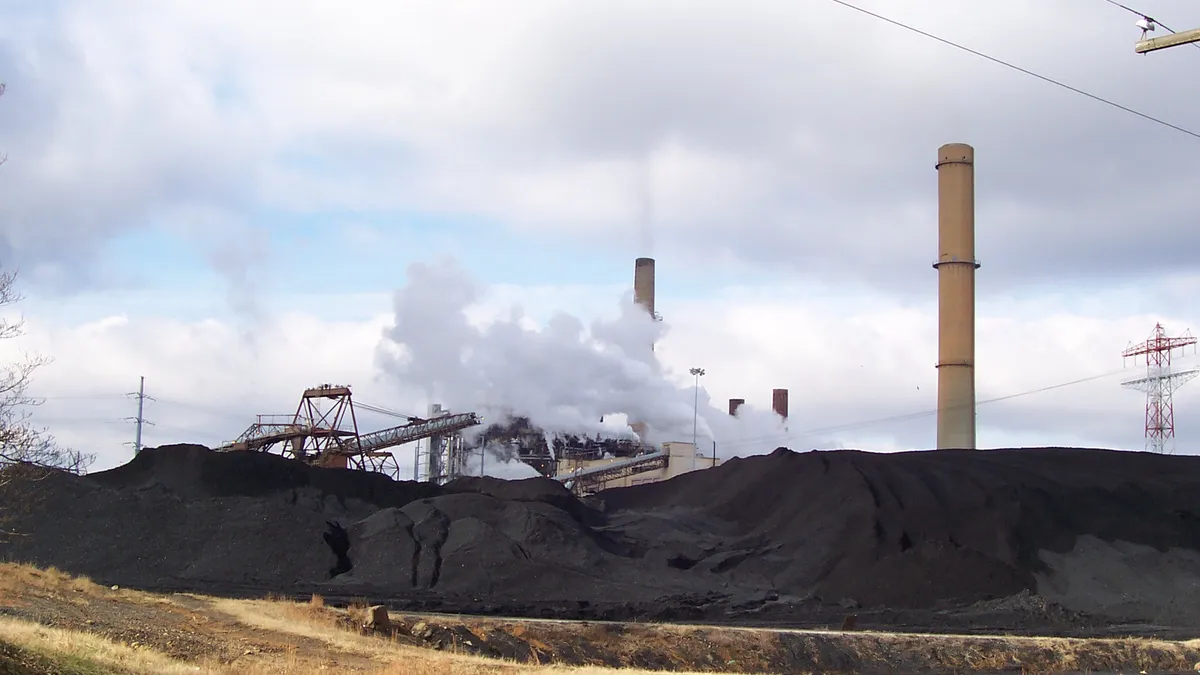Dive Brief:
- Dominion Energy will expand its net zero carbon emission goals to include downstream emissions and emissions related to upstream materials from suppliers, the company announced Friday on its latest quarterly earnings call.
- The goal to decarbonize Scope 2 emissions – those related to electricity Dominion produces but does not generate – and Scope 3 emissions – generated downstream by customers and upstream by suppliers – follows Dominion's existing commitment for net zero emissions by 2050. Dominion also detailed a $37 billion growth capital spending plan through 2026, with at least 85% of the investments focused on decarbonizing its existing network.
- Dominion also announced Friday that it would sell Hope Gas Inc., the company's West Virginia natural gas utility, to Ullico Inc. for $690 million.
Dive Insight:
Dominion has touted its decarbonization strategy as one of the most aggressive among large utilities. At the end of 2020, Dominion had reduced carbon dioxide-equivalent emissions by 42% compared to 2005 levels, while the amount of coal-fired power in it generation portfolio had dropped from 52% in 2005 to 11% at the end of 2021, according to its earnings statement.
Dominion CEO Bob Blue said on Friday's earnings call that meeting the goal of expanding net zero commitments to Scope 2 emissions and the material categories of Scope 3 – including materials used by suppliers – is "going to require new technology and a supportive regulatory environment." However, he added, "there are lots of opportunities and we think it's important. It's what customers and shareholders are looking to do."
The expansion of net zero goals to Scope 2 and Scope 3 emissions is relatively rare among large utilities, said Edward Jones analyst Mike Doyle. Duke Energy made a similar commitment in its latest earnings call last week, but Doyle said that "most utilities don't talk about Scope 2 or Scope 3 too much." Dominion, Doyle said, has made "a lot of progress" in decarbonization, especially considering the dependence on fossil fuels the utility had at the start of the century.
"From a management perspective, they've done a pretty good job of setting those goals and executing plans to meet them over time," Doyle said.
A centerpiece of Dominion's decarbonization strategy is a roughly $10 billion, 2.6-GW offshore wind farm planned off the coast of Virginia. Blue said there has been no noticeable change in support for the project after the 2021 election of Republican Glenn Youngkin as Virginia governor, saying "energy has not been a big focus" of the new administration so far.
Cassady Craighill, communications and advocacy director for the environmental group Clean Virginia, said the projected spending on offshore wind is "really staggering" and said regulators need to "do what they can to cap the costs … since Dominion will only work to make it as expensive as possible given the monopoly's guaranteed rate of return." Craighill said the high cost relative to the number of homes it will power pales in comparison to the Vineyard Wind project approved off the coast of Massachusetts.
The utility is also continuing to move off of natural gas. The sale of Hope Gas, which serves about 111,000 West Virginia customers, follows the high-profile sale of the Questar Pipeline last year. Blue said the sale of the "relatively small" unit – which must still be approved by the West Virginia Public Service Commission – is not expected to have any impact on ratepayers.
Doyle said the sale will also help simplify Dominion's regulatory structure by getting it out of a state where it had a relatively small share of business. "It makes sense on a lot of fronts," Doyle said, "and it helps get them a little more out of gas."
Overall, Dominion reported $1.3 billion in earnings for the three months ending Dec. 31, 2021, up from $682 million the previous year. Earnings for 2021 were $3.3 billion, compared to a net loss of $401 million in 2020.














